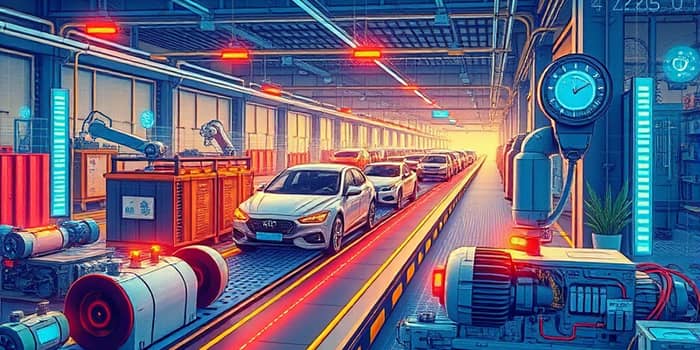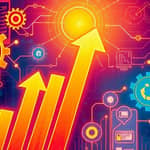
As global markets plateau and regulations tighten, component manufacturers are pivoting toward electric vehicles to secure their future.
In an era defined by climate urgency and technological leaps, automotive suppliers face a defining moment. With light-duty vehicle sales forecast at approximately 89.6 million in 2025 and expected to inch toward 97.7 million by 2035 at a modest CAGR of 1.4%, the industry confronts a reality of stagnating global sales volumes. At the same time, electrification surges ahead: in 2024, the US alone recorded 1.3 million battery electric vehicle (BEV) sales, and by 2025, one in four US vehicles sold will feature electrified powertrains, including hybrids.
Regulatory pressures and consumer appetite for zero-emission mobility are reshaping supplier strategies. Governments worldwide are tightening tailpipe standards and offering incentives for EV adoption, even as policy shifts in the US introduce uncertainty around future emissions targets.
Complex regional dynamics — from Europe’s goal of 50–55% BEV penetration by 2030 to North America’s 20–30% forecast — compel suppliers to recalibrate product portfolios. Meanwhile, Chinese OEMs press aggressively into global markets, creating intense competitive pressure on Western suppliers to accelerate innovation.
To navigate these headwinds, suppliers must embrace agile operational models and invest strategically in workforce development. This dual focus helps contain costs while equipping teams for the complexity of EV systems.
Electrification is fostering new alliances between battery producers, electronics firms, and software vendors. Traditional tier suppliers are evolving their roles, moving up the value chain to integrate battery cell assembly, power electronics, and digital services.
This snapshot highlights the regional disparities and underscores the importance of local content strategies. Suppliers that secure footholds in high-growth markets will outpace peers in both scale and profitability.
Beyond electrification, sustainability has become a non-negotiable strategic pillar. Leading suppliers are targeting carbon footprint reduction by adopting low-carbon materials, enhancing recyclability of battery components, and powering facilities with renewable energy.
Digital transformation also extends to customer support. Connected-vehicle platforms generate data streams suppliers can monetize through over-the-air software upgrades, predictive diagnostics, and value-added services — turning components into ongoing revenue sources.
To thrive, suppliers should craft a multi-pronged strategy centered on innovation, partnerships, and financial discipline:
By balancing near-term profitability with long-term investments, suppliers can ride the wave of electrification rather than fight against it. Those that fail to adapt risk obsolescence as automakers demand increasingly sophisticated EV solutions.
The shift to electrification represents both a formidable challenge and an extraordinary opportunity. Suppliers that embrace change with purpose can unlock new revenue streams, deepen customer relationships, and contribute meaningfully to a net-zero future.
In the coming decade, the most successful component manufacturers will be defined not by their legacy of combustion engines, but by their agility in software, their mastery of battery technology, and their commitment to environmental stewardship. With rapid technological innovation as their compass and sustainability as their guiding star, automotive suppliers have the chance to lead the next era of mobility.
Now is the time for bold investments, creative partnerships, and unwavering focus on electrified excellence. The road ahead is electric — and it belongs to those ready to power forward.
References













